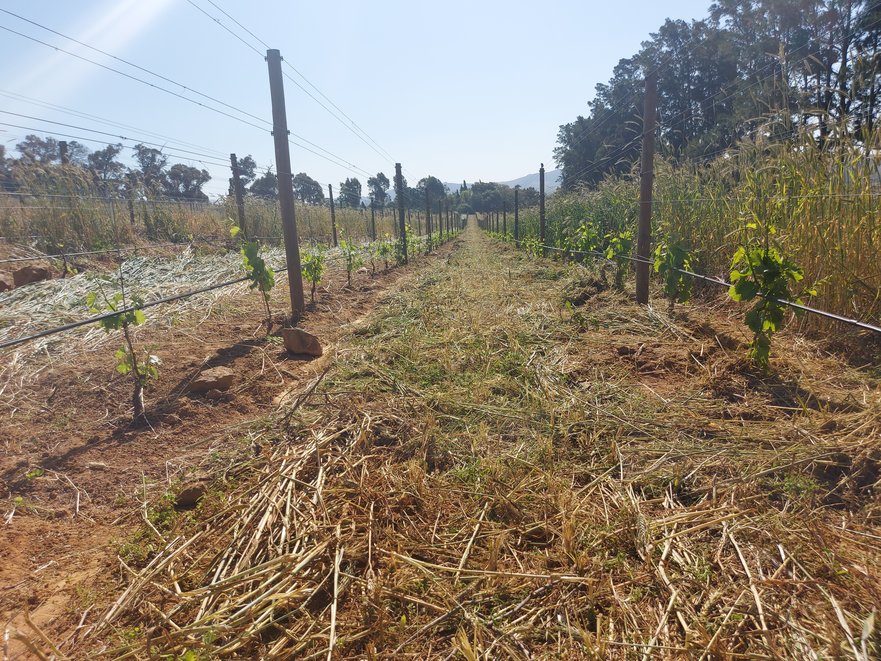COVER CROP TERMINATION
THERE ARE MANY TERMINATION methods, including crimper rolling, chemical and discing, but the two most popular methods are rolling, and mowing-and-blowing. When cover crops are rolled, the material remains in place as it’s still connected to its roots. This avoids material being blown away by the wind, which is a risk when normal mowing is done.
Rolling brings the biomass in contact with the soil, making it accessible to microbes that start the decomposition process. The cover crop layer that covers the soil after rolling provides benefits such as conserving moisture and suppressing summer weeds. This method provides farmers with a long-term approach, seeing as they then don’t focus their soil improvement solely on the vine rows. Having a living mulch such as medics and clovers on the plant rows work well in combination with rolling cover crops located in work rows. With this approach the entire surface will benefit from cover cropping, making the work row much more attractive to vine roots than before.
Rolling is not always sufficient, especially if the cover crop has not produced sufficient biomass due to a poor stand or if termination is required at an early stage. In the case of the first roll not being effective, it’s advised to roll once more but in the opposite direction. The effectiveness of rolling is also determined by the suitability of the crimper-roller, specifically looking at the design and weight. If rolling is not possible the alternative is to spray or mow the cover crop. Termination via mowing-and-blowing entails using a mower that blows or conveys the cover crop material to the vine rows. This method is often used by farmers looking to produce their own mulch as a cost-saving exercise. It’s ideal if the material is cut as rough as possible, allowing a longer lasting mulch. When cover crops are mowed-and-blowed, farmers need to make sure it is done before it has set viable seed.
Therefore, it is important to select cover crops that have similar growing seasons, which makes timing easier. If the cover crops have reached a growth stage containing viable seed, it is advised to rather roll or mow it in a normal fashion. The drawback of mowing-and-blowing is that it removes most of the cover crop biomass from the work row, often leaving it with short stubble. Work rows that have been mowed-and-blowed are more prone to weeds germinating and evaporation than rolled work rows. Mowing-and-blowing can however be timed at an early enough stage to provide a mulch for the plant rows, while ensuring sufficient regrowth to cover the work rows. Timing of termination is of the utmost importance. Cover crops that are terminated late in the season are allowed to produce the maximum amount of biomass with the highest C:N (Carbon: Nitrogen) ratio and fibre content possible. These cover crops will last longer, but nutrients will be released over a longer period. If cover crops are terminated at an earlier stage, nutrients are released quicker but it often leads to lower biomass yields.
Cover cropping is an important strategy for more sustainable farming. It allows producers to sequester atmospheric carbon in their soil, leading to better water infiltration, water retention and cation exchange capacity (CEC). At the end of the day, these benefits and the success of cover crops are determined by cover crop selection. Effective termination will also continue to play an important role in getting the best results.

A crimper roller and mow-and-blower at Welgevallen in Stellenbosch as part of the Gen-Z cover crop demo day
.jpg?height=1041&width=882)
Triticale that was crimper-rolled

Triticale that was mowed-andblowed to the plant row on the right.

